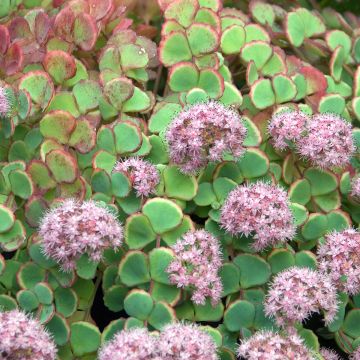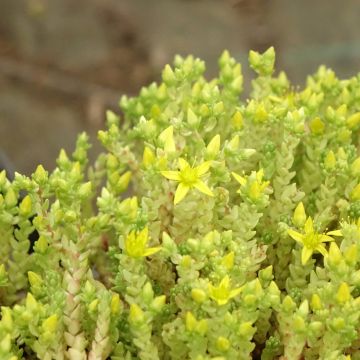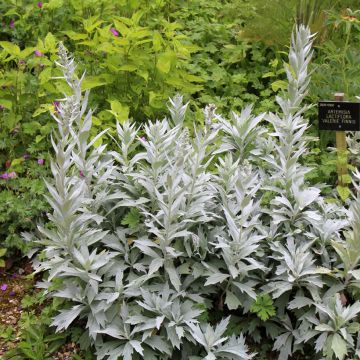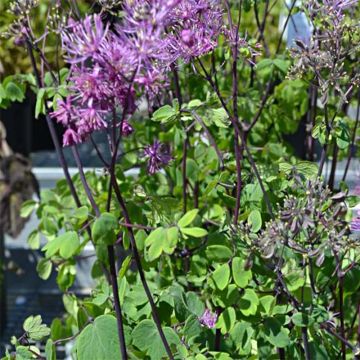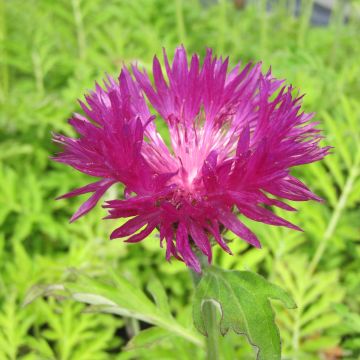

Sedum Bon Bon - Stonecrop
Sedum Bon Bon - Stonecrop
Sedum Bon Bon
Stonecrop
This item cannot be shipped to the selected country
Delivery charge from €5.90
Delivery charge from €5.90
More information
Schedule delivery date,
and select date in basket
This plant carries a 12 months recovery warranty
More information
We guarantee the quality of our plants for a full growing cycle, and will replace at our expense any plant that fails to recover under normal climatic and planting conditions.
From €5.90 for pickup delivery and €6.90 for home delivery
Express home delivery from €8.90.
From €5.90 for pickup delivery and €6.90 for home delivery
Express home delivery from €8.90.
Does this plant fit my garden?
Set up your Plantfit profile →
Description
Sedum telephium ‘Bon Bon’, also known as Hylotelephium telephium 'Bon Bon', is an autumn stonecrop that combines a neat appearance with superb colour. This perennial forms a pretty clump of purple stems bearing leaves in shades of brown and burgundy. Small pink clusters bloom in summer, bursting into life with a perpetual ballet of butterflies throughout the flowering season. This plant is appreciated for its ease of cultivation in a wide variety of conditions, both in the garden and in pots.
Sedum 'Bon Bon' belongs to the Crassulaceae family. It is a hybrid cultivar obtained in the Netherlands in 2006 by Degenhardt. This 'Bon Bon' variety forms a small, bushy, dense clump, reaching between 40 and 50cm (16 to 20in) in height and spreading over 45cm (18in). Flowering takes place between the end of July and September. The inflorescences, in rounded terminal cymes, are composed of tiny star-shaped flowers in a delicate pink colour. Intensely nectar-rich and honey-bearing, they attract many insects and butterflies. The deciduous foliage is thick and fleshy, with an undulate and crenate margin. The colour of the glossy leaves is intermediate between chocolate-brown and reddish-brown. They are borne on purple stems. The above-ground vegetation is absent in winter, but emerges from the ground in spring.
Sedum or Hylotelephium telephium 'Bon Bon' is perfect for areas of the garden with lean, thin soil. It prefers well-drained, even dry soil and does not tolerate waterlogged soil in winter. Plant it with the stones of a rockery, the paving of a patio, or on low walls, surrounding it with a procession of Euphorbias (E.myrsinites, E. 'Orange Man'), grasses such as Stipa tenuifolia and Eragrostis, sempervivums, and plants with grey foliage such as artemisias and cinerarias, which accept the same difficult living conditions. Its sculptural design works well in pots. It is also an excellent flower to dry, or for bouquets of fresh flowers.
Report an error about the product description
Flowering
Foliage
Plant habit
Botanical data
Sedum
Bon Bon
Crassulaceae
Stonecrop
Hylotelephium telephium Bon Bon
Cultivar or hybrid
Other Sedum
Planting and care
Plant ‘Bon Bon’ in ordinary, fairly rich, dry, sandy, and calcareous soil. It must be well drained to protect the roots from the cold humidity of winter. It tolerates clay soils in regions with dry winters. Too much fertiliser or overly fertile soil can deform this well-compacted variety. It must be planted in the sun, to accentuate the colouration of the foliage. In containers, provide a bed of gravel in the bottom of the pot for drainage.
Sedums are very easy to propagate. In spring, cut a stem or even a leaf and leave it to dry for a few days before placing it in a tray of damp sand.
Planting period
Intended location
Care
This item has not been reviewed yet - be the first to leave a review about it.
Cottage garden perennials
Haven't found what you were looking for?
Hardiness is the lowest winter temperature a plant can endure without suffering serious damage or even dying. However, hardiness is affected by location (a sheltered area, such as a patio), protection (winter cover) and soil type (hardiness is improved by well-drained soil).

Photo Sharing Terms & Conditions
In order to encourage gardeners to interact and share their experiences, Promesse de fleurs offers various media enabling content to be uploaded onto its Site - in particular via the ‘Photo sharing’ module.
The User agrees to refrain from:
- Posting any content that is illegal, prejudicial, insulting, racist, inciteful to hatred, revisionist, contrary to public decency, that infringes on privacy or on the privacy rights of third parties, in particular the publicity rights of persons and goods, intellectual property rights, or the right to privacy.
- Submitting content on behalf of a third party;
- Impersonate the identity of a third party and/or publish any personal information about a third party;
In general, the User undertakes to refrain from any unethical behaviour.
All Content (in particular text, comments, files, images, photos, videos, creative works, etc.), which may be subject to property or intellectual property rights, image or other private rights, shall remain the property of the User, subject to the limited rights granted by the terms of the licence granted by Promesse de fleurs as stated below. Users are at liberty to publish or not to publish such Content on the Site, notably via the ‘Photo Sharing’ facility, and accept that this Content shall be made public and freely accessible, notably on the Internet.
Users further acknowledge, undertake to have ,and guarantee that they hold all necessary rights and permissions to publish such material on the Site, in particular with regard to the legislation in force pertaining to any privacy, property, intellectual property, image, or contractual rights, or rights of any other nature. By publishing such Content on the Site, Users acknowledge accepting full liability as publishers of the Content within the meaning of the law, and grant Promesse de fleurs, free of charge, an inclusive, worldwide licence for the said Content for the entire duration of its publication, including all reproduction, representation, up/downloading, displaying, performing, transmission, and storage rights.
Users also grant permission for their name to be linked to the Content and accept that this link may not always be made available.
By engaging in posting material, Users consent to their Content becoming automatically accessible on the Internet, in particular on other sites and/or blogs and/or web pages of the Promesse de fleurs site, including in particular social pages and the Promesse de fleurs catalogue.
Users may secure the removal of entrusted content free of charge by issuing a simple request via our contact form.
The flowering period indicated on our website applies to countries and regions located in USDA zone 8 (France, the United Kingdom, Ireland, the Netherlands, etc.)
It will vary according to where you live:
- In zones 9 to 10 (Italy, Spain, Greece, etc.), flowering will occur about 2 to 4 weeks earlier.
- In zones 6 to 7 (Germany, Poland, Slovenia, and lower mountainous regions), flowering will be delayed by 2 to 3 weeks.
- In zone 5 (Central Europe, Scandinavia), blooming will be delayed by 3 to 5 weeks.
In temperate climates, pruning of spring-flowering shrubs (forsythia, spireas, etc.) should be done just after flowering.
Pruning of summer-flowering shrubs (Indian Lilac, Perovskia, etc.) can be done in winter or spring.
In cold regions as well as with frost-sensitive plants, avoid pruning too early when severe frosts may still occur.
The planting period indicated on our website applies to countries and regions located in USDA zone 8 (France, United Kingdom, Ireland, Netherlands).
It will vary according to where you live:
- In Mediterranean zones (Marseille, Madrid, Milan, etc.), autumn and winter are the best planting periods.
- In continental zones (Strasbourg, Munich, Vienna, etc.), delay planting by 2 to 3 weeks in spring and bring it forward by 2 to 4 weeks in autumn.
- In mountainous regions (the Alps, Pyrenees, Carpathians, etc.), it is best to plant in late spring (May-June) or late summer (August-September).
The harvesting period indicated on our website applies to countries and regions in USDA zone 8 (France, England, Ireland, the Netherlands).
In colder areas (Scandinavia, Poland, Austria...) fruit and vegetable harvests are likely to be delayed by 3-4 weeks.
In warmer areas (Italy, Spain, Greece, etc.), harvesting will probably take place earlier, depending on weather conditions.
The sowing periods indicated on our website apply to countries and regions within USDA Zone 8 (France, UK, Ireland, Netherlands).
In colder areas (Scandinavia, Poland, Austria...), delay any outdoor sowing by 3-4 weeks, or sow under glass.
In warmer climes (Italy, Spain, Greece, etc.), bring outdoor sowing forward by a few weeks.




































